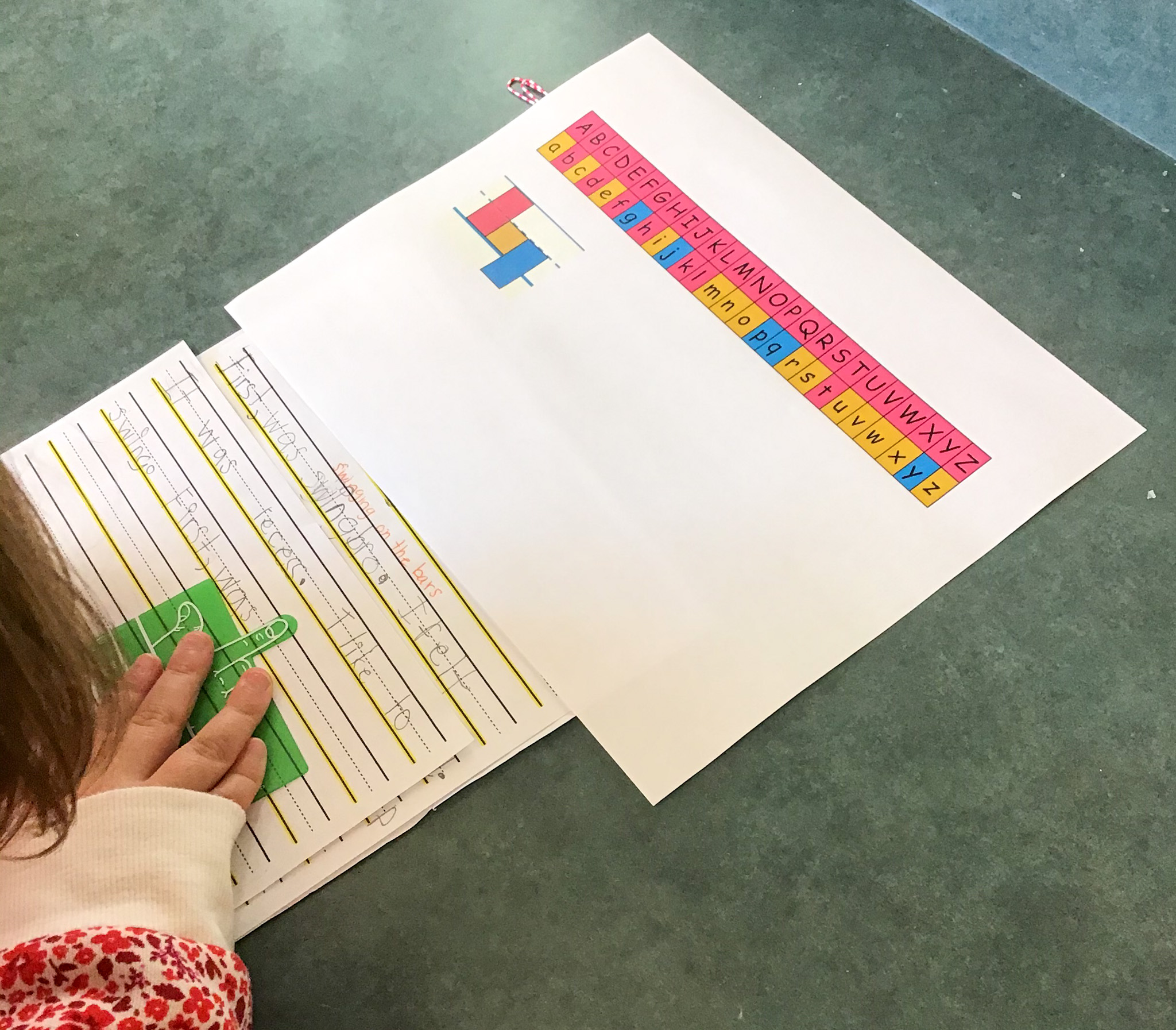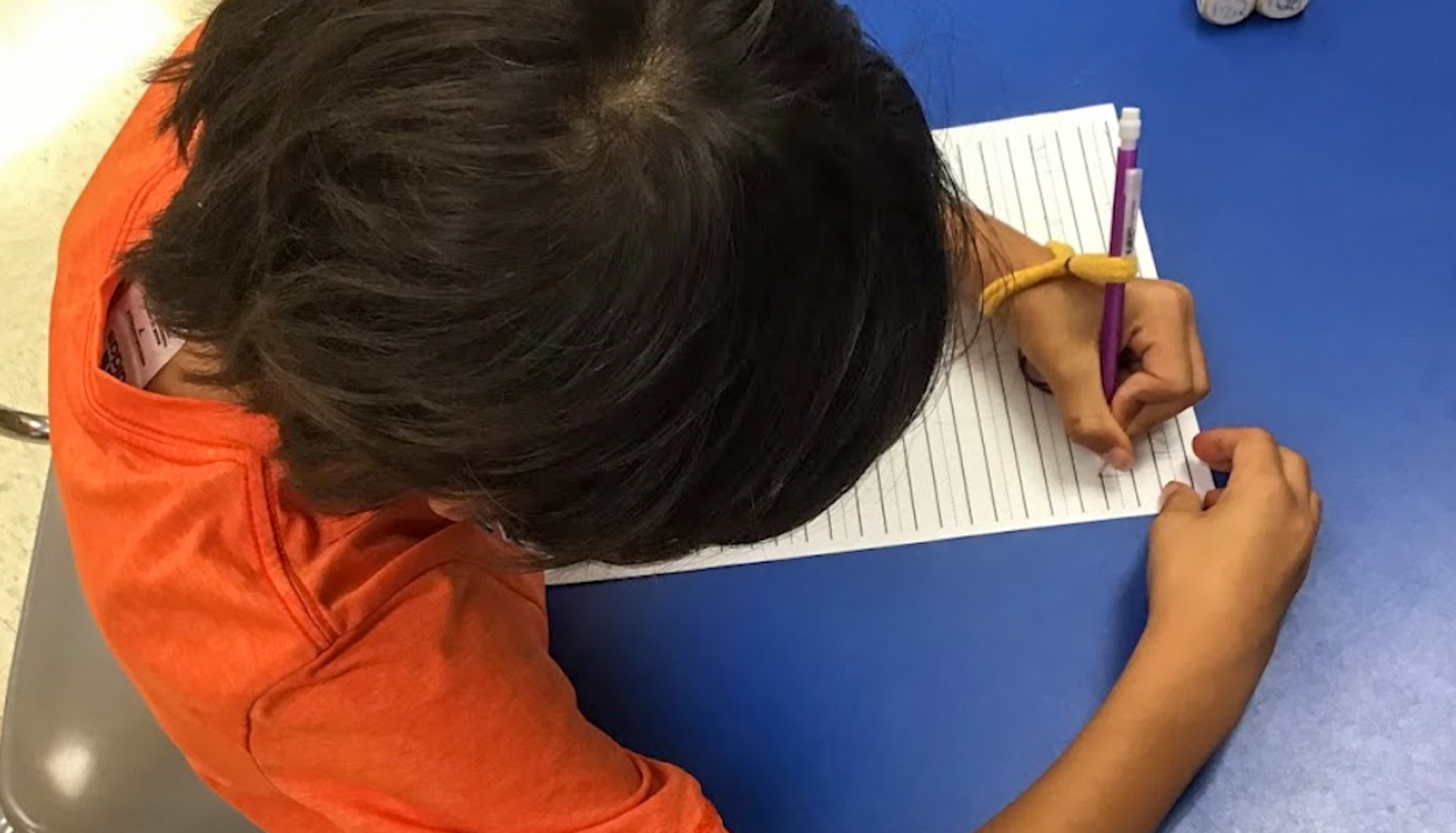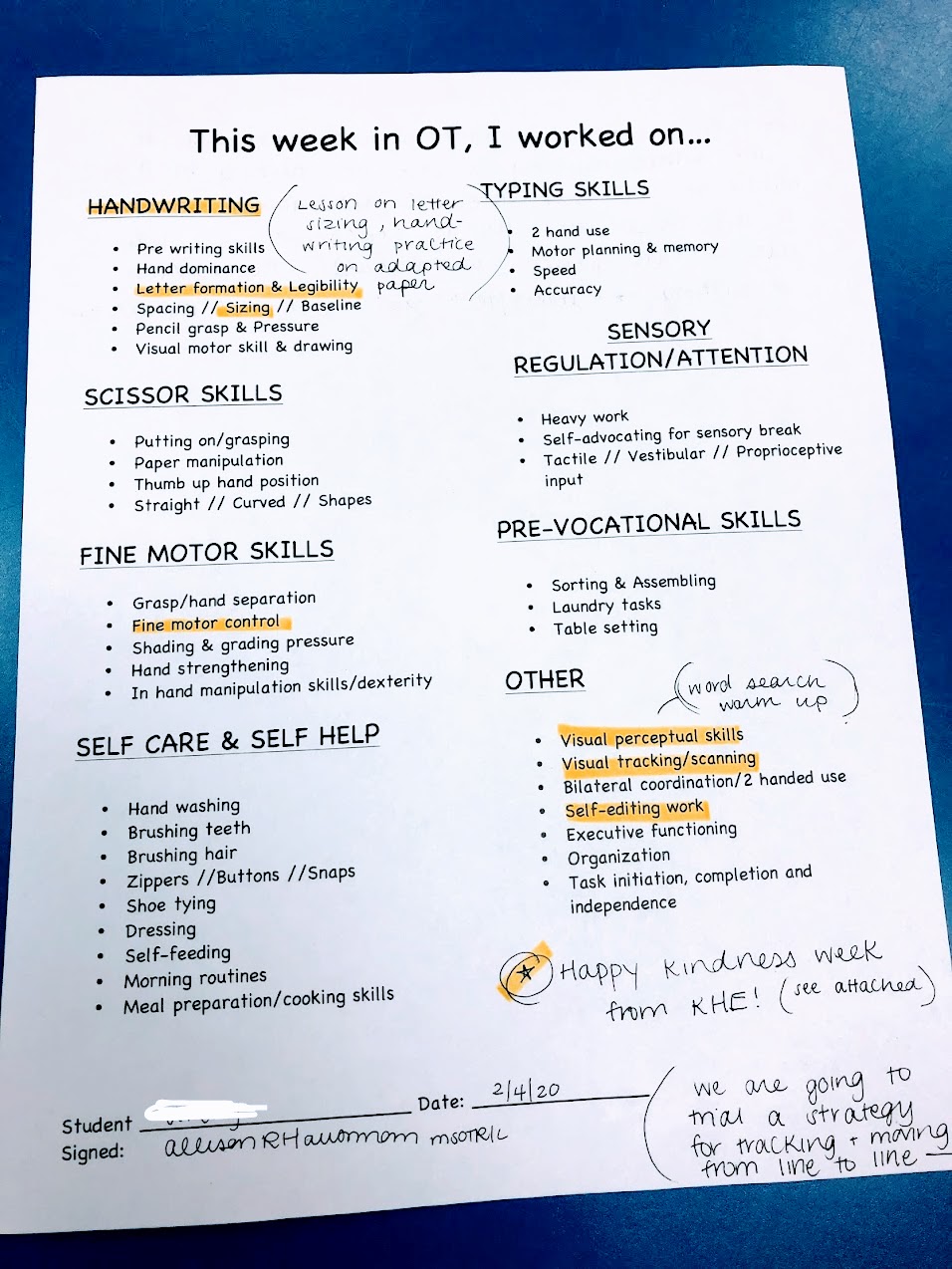
3 Things to do when Getting a New OT Student
Share
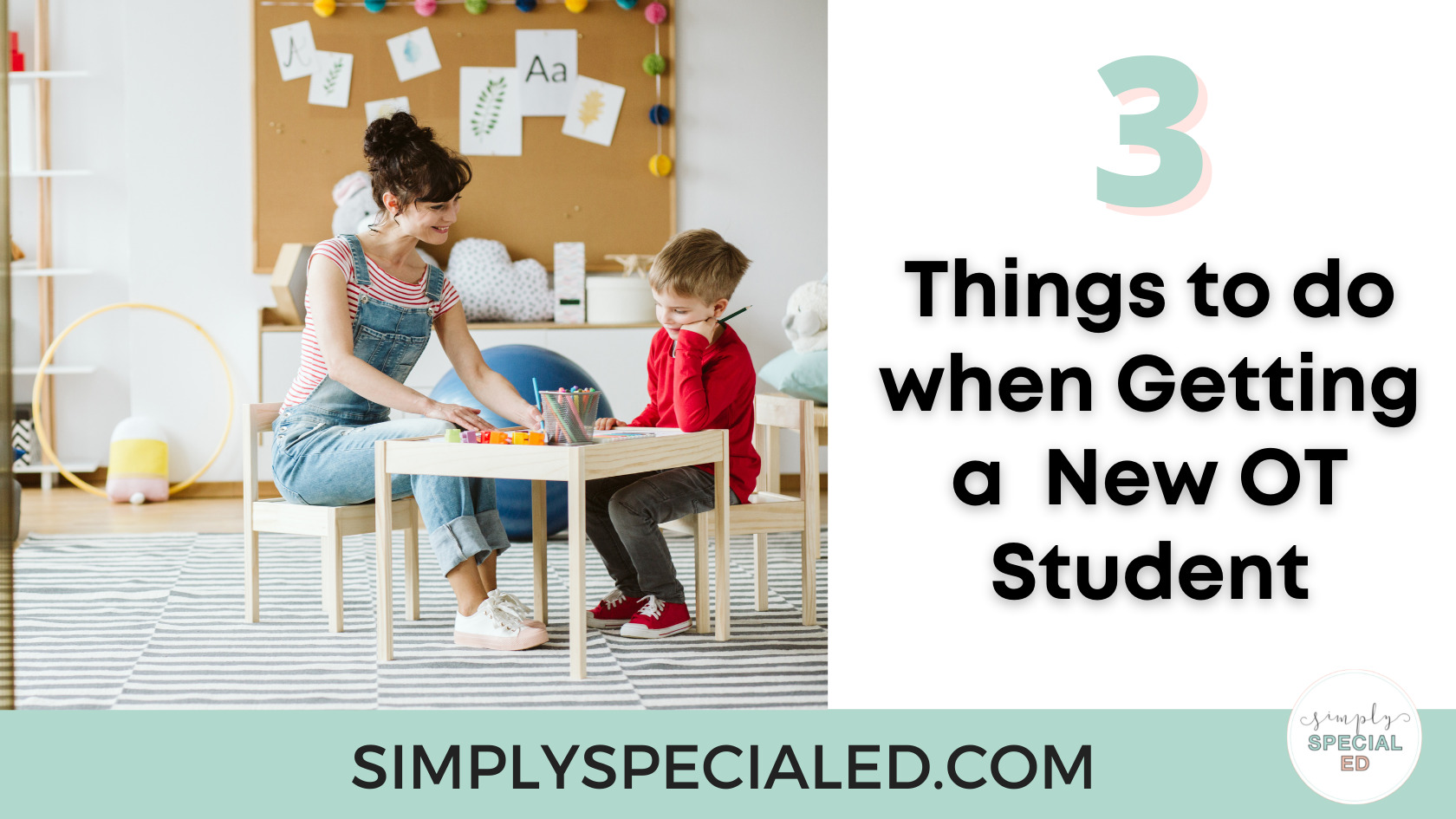
As a special educator, you are likely to get a new OT student some day! As a school-based occupational therapist (OT), I have a large and diverse caseload. Do your students have a variety of related services listed in their IEPs? While the team approach is vitally important to students’ success, I think we can all admit that coordinating so many professionals can be overwhelming! If you’re wondering where to begin when getting a new OT student on your caseload, you are in the right place! Below are 3 things to do when you have a new student who receives OT services.
Read the IEP
It seems self-explanatory, but whenever you get a new student on your caseload, make sure to thoroughly read their IEP. OT information is in a variety of different places in the student’s IEP. Names of sections can vary from state to state, but below are the general terms my district uses.
Where to look for OT information in an IEP
Initial or Reevaluation
All standardized and non-standardized assessments and evaluations should be here. This is where you can find information about qualification/need for OT services. If your student doesn’t currently have OT, you can find out if they have ever been evaluated and/or dismissed in an evaluation report!
Present Levels [of Functional Performance]
Most updated information regarding their OT treatment/intervention/progress is found in this section. I typically list the student’s current frequency, format [group/individual/consultation/push in/pull out] and goal areas. I discuss what we have done to address those goal areas as well as anecdotal information regarding progress and a copy of their most recent progress report.
Specifically Designed Instruction (SDIs)
Not all the SDIs and accommodations will be written by the OT. However, you can see if your student requires any adaptive equipment, sensory items, alternative seating, etc. in this section. Make sure they are set up for success!
Related Service Grid
- The time and format of service will be here. This will be good to know when it comes time to schedule!
- My district lists consultative time [indirect time during which the student isn’t being worked with directly] under a section we call “supports for school personnel”. I list time here that I plan to spend formally consulting and collaborating with the IEP team.
Goals
This varies school by school. Some districts require related service providers, like occupational therapists, to write and monitor their own goals. This may be a specific fine motor goal, for example. However, other districts may have OTs supporting an academic goal that is written by the entire IEP team. Rather than being the only team member responsible for the goal, as a related service provider, they would support skills related to this goal area.
Parent Input
I always encourage teachers and case managers to review previous parent input sections in the IEP [and to request updated input!] for all new students. As a school team, it is important that we don’t forget that parents/guardians are a huge part of the IEP team! Make sure to share any OT-related concerns that come up with the current OT!
Make sure to inform the rest of the team with all of the important information listed above. Alyssa has a great blog on The FIRST Thing You Should Do as a New Special Education Teacher. Check that out if you need some suggestions on how to hit the ground running!
Meet with the OT
As a new school-based therapist, I found it very helpful to have my own website [screenshot below]. This helped the teachers in all of my buildings get to know me! Each year I keep it updated not only for school staff, but for my students’ families. I always prefer to meet with the teacher’s of my OT students in person to collaborate!
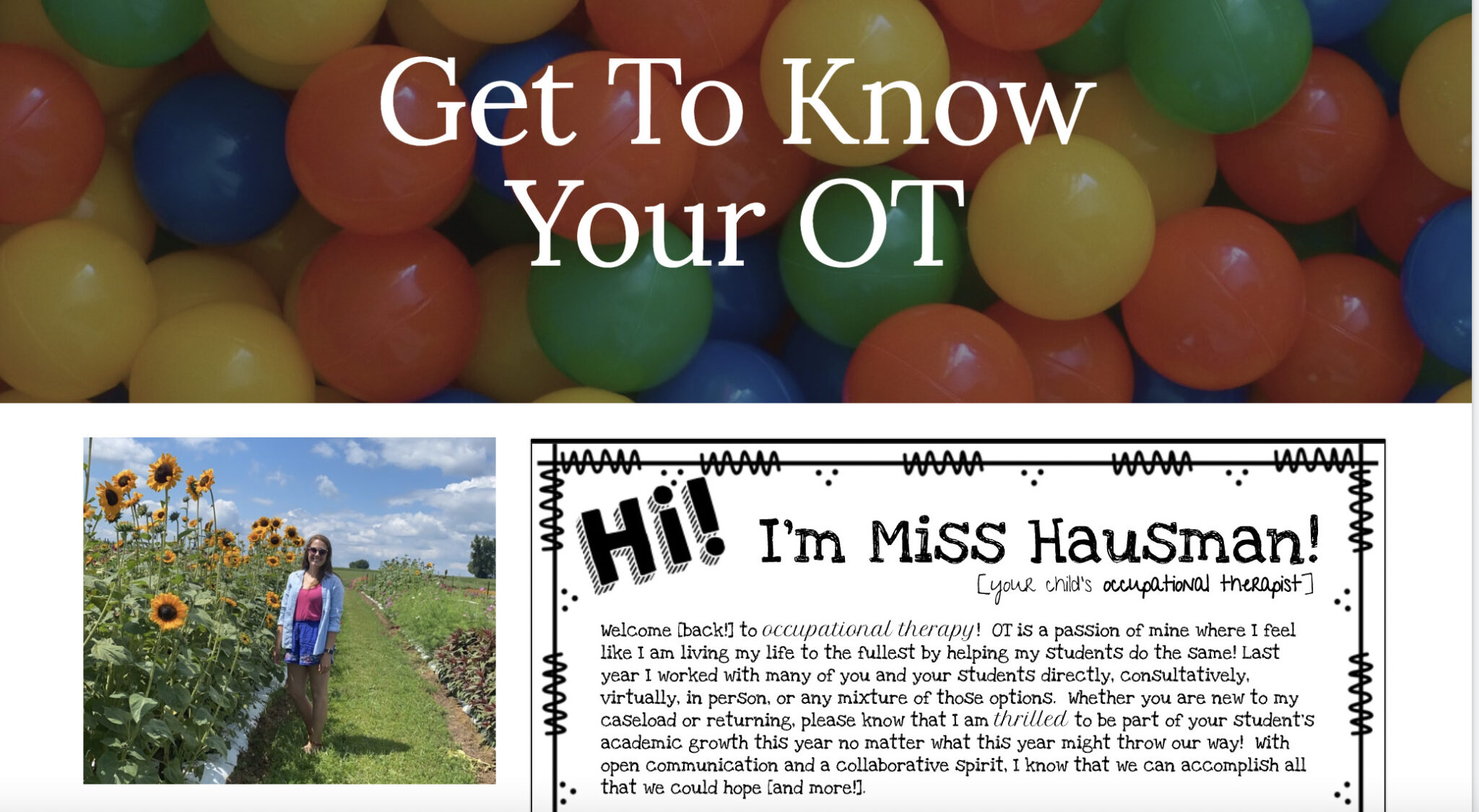
Find a time that works well for the two of you to sit down and review the plan for the student! Invite other team members if they are free! If you are familiar with the student, now would be a great time to address your current classroom concerns and/or recent input from the parent. What is the most challenging part of their day? What skill delays seem to be holding them back from fully accessing the curriculum? If there are materials in the SDIs that you do not have, make sure to ask for them! Many of my students benefit from pencil grips, adapted paper, alternative seating, sensory breaks and/or other adapted equipment to be independent throughout their school day. That should all be in the SDIs of the IEP!
If you ask any school-based therapist what the “worst part of their job is”, they would either say something about the amount of paperwork/documentation or scheduling! When you meet with your OT, come ready to collaborate on a schedule. Based on what you reviewed in the IEP, have some day/time suggestions, but remember to be flexible! Most students are only seen one to two times per week, and often times therapists travel between several buildings with 50-100 students on their caseloads! I have found it helpful to set up Google Calendar invitations as recurring events when scheduling my OT students. It keeps me organized! I have also found that inviting the classroom teachers to these events, and having reminders set for notifications 5 minutes before the scheduled time, has been a really helpful reminder for teachers. Figure out [and communicate!] what works best for you!
invitations as recurring events when scheduling my OT students. It keeps me organized! I have also found that inviting the classroom teachers to these events, and having reminders set for notifications 5 minutes before the scheduled time, has been a really helpful reminder for teachers. Figure out [and communicate!] what works best for you!
Make a plan
Finally, make a plan for moving forward. Schedule a time to meet regularly or create a plan for touching base! I always think that I am going to “run into” the teachers of my students, but it is so easy to miss one another during the busy school day. Email or Google Forms is a great way to communicate, but be intentional about how frequently you plan to schedule these check ins! Carryover is key! Students make so much more progress if they are practicing skills [with similar prompting and accommodations/adaptations] all day at school and at home! Check out this blog on how one teacher implemented fine motor centers in her classroom! This is a great example of how fine motor activities could be introduced during OT sessions, but carried over daily/weekly in the special education classroom!
is a great way to communicate, but be intentional about how frequently you plan to schedule these check ins! Carryover is key! Students make so much more progress if they are practicing skills [with similar prompting and accommodations/adaptations] all day at school and at home! Check out this blog on how one teacher implemented fine motor centers in her classroom! This is a great example of how fine motor activities could be introduced during OT sessions, but carried over daily/weekly in the special education classroom!
Making a plan for parent communication is also important! Some of the self contained classrooms I work in send home communication folders, and parents prefer that I write notes in those! Other times, I send home my own communication sheet or post on Class DoJo! Check out the Simply Special Ed Home/School Communication Logs if you don’t currently have a system or are looking to streamline yours! Again, that carryover of skills improves with clear and consistent communication! Partner with your OT to make that possible!
In summary, these three “C’s” lead to consistent success for your OT student:
- Communication
- Collaboration
- Consistency
Teamwork makes the dream work!
John Maxwell

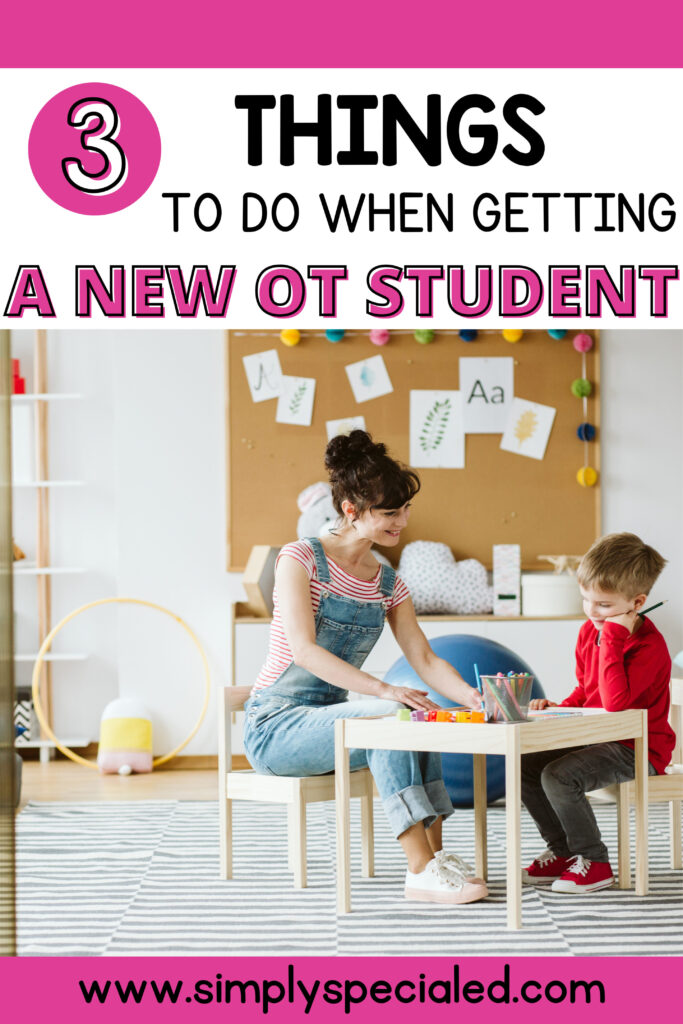
The post 3 Things to do when Getting a New OT Student appeared first on Simply Special Ed.

